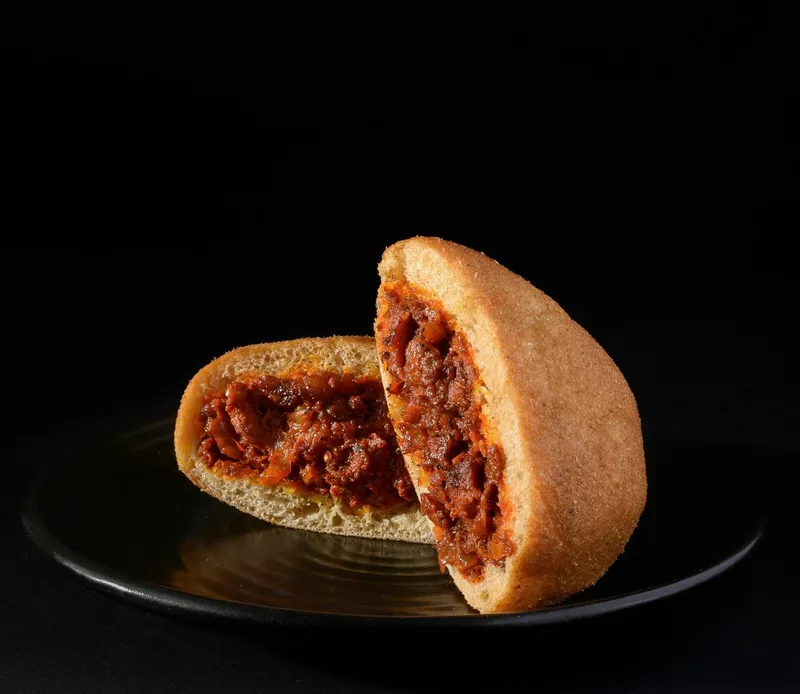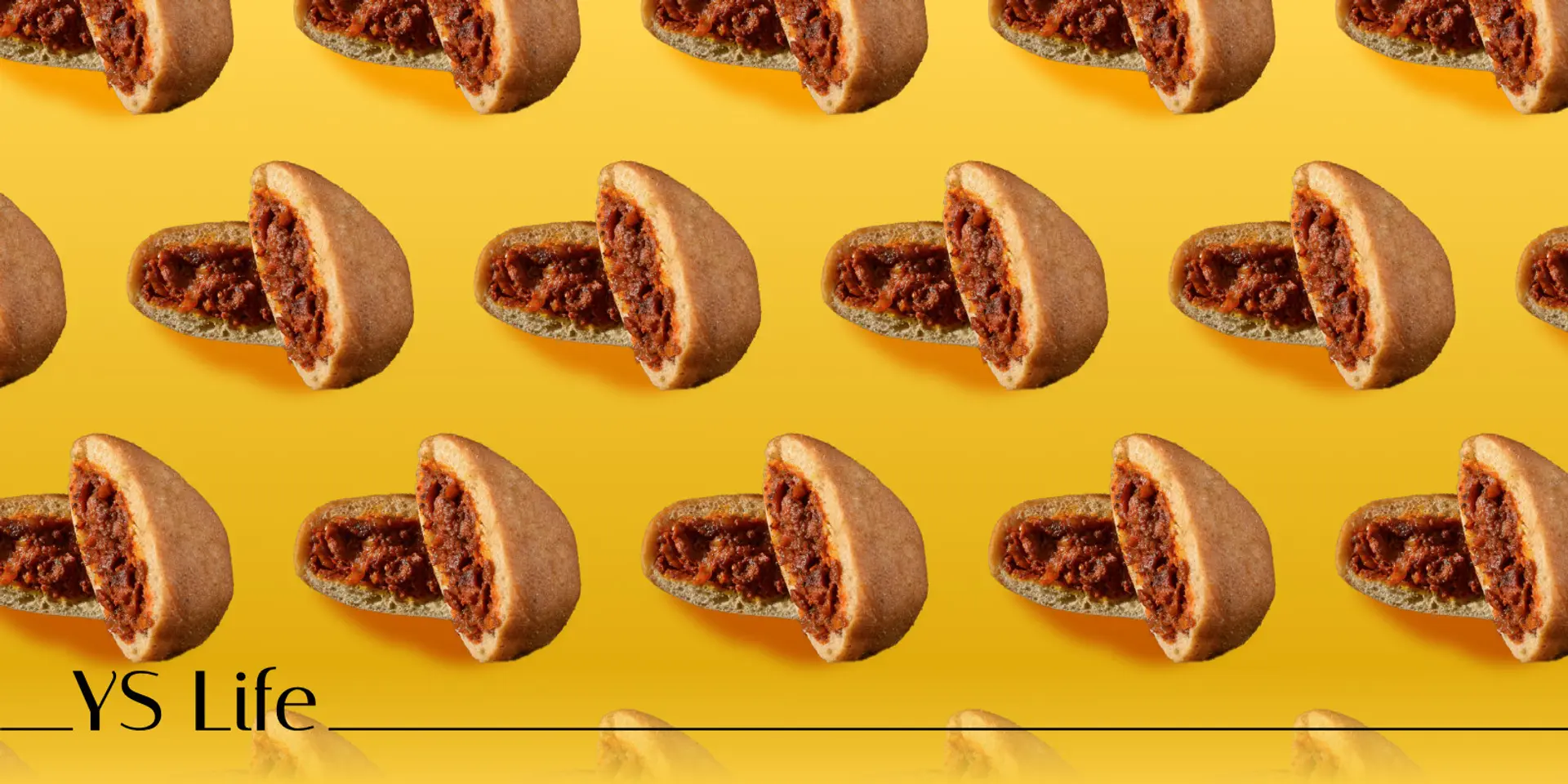The grand old Goan poie strikes a fine balance between tradition and modernity
Poie, an artisanal bread, has been a staple for generations of Goan households. This fresh and fluffy bread–which entered India around 400 years ago–continues to stay relevant, lending itself to many innovations and interpretations.
On my recent visit to Goa, I enjoyed freshly baked bread slathered with butter, paired with the quintessential Ros omelette—a popular street food available in gaadas (local stalls).
There was something about this bread—known as poie or poee—that left me utterly dazzled and curious. Its dense and fluffy texture and mildly sour taste stuck with me. I chomped on it with everything from Chorizo (pork sausage) to Vindaloo and Xacuti gravies—and every single time, its taste lingered in my palate.
Curiosity led me to do a quick search on the history of this traditional leavened bread. Interestingly, its origin dates back to about 400 years during the Portuguese invasion of Goa. The Portuguese Jesuit missionaries are believed to have taught the Goan Catholics the art of bread making, which is carried on even today.

The traditional Goan poie | Image source: Shutterstock
There are several traditional bakeries that criss-cross the length and breadth of Goa. One such place is Old Bakery in Ribander, a village in Panjim, run by Shaeen Gomes. The bakery, which boasts a 100-year-old legacy, is a testament to the state’s sentiment towards this bread.
The profession of a poder (baker in Konkani) is one of the oldest and highly revered vocations in Goa. Previously, poders came from Majorda in the southern part of the state. Over time, bakers migrated and opened their establishments everywhere in Goa.
And, needless to say, the Goan poie is held in high esteem by bakers all over the state.
It is no secret that breads are an intrinsic part of Goan culture. Even today, Goans wake up to the aroma of freshly-baked bread. The poie, in particular, has been a staple of Goan households for generations.
“My great grandfather migrated from Majorda to Ribandar to start this bakery. We bake the poie every single day—it’s the freshness that makes it so delicious,” says Gomes.
Inside the world of poie making
Though the poie has a long and rich legacy, it has given way to newer practices. Many bakeries today do not strictly adhere to traditional ingredients and processes to make the poie.
Traditionally, the poie was infused with fermented toddy by poders. However, this ingredient is hard to procure these days and has been replaced with fresh yeast.
But it is the toddy that gives the poie a distinct taste, admits Gletta Mascarenhas, who runs Confeitaria 31 de Janeiro in Panaji, a bakery set up in the 1930s by her late father-in-law Andrew Mascarenhas.
The bakery uses the traditional ingredient on request by its customers, subject to availability.
Earlier, wheat rusk and wheat flour were considered non-negotiables in poie making.
“Poie is the healthiest of all breads because of the ingredients that go into it, besides maida (this refined flour is used in a small quantity). That’s why it is popular amongst the elderly population who have diabetes and digestive issues. The addition of wheat husk makes it rich in fibre,” explains Gomes.
However, many new outlets today use artificial colours to give it a brown shade, she says, adding that Old Bakery steers clear of this practice.

Chorizo-stuffed poie by Poie & Pao
It’s not just the ingredients that make the poie what it is, but the technique is equally important, lending the bread its unique texture and flavour.
The process begins with the baker loading the wood inside the oven every morning. Thereafter, the kneading of the dough begins.
Unlike other types of Goan bread where rice flour is the primary ingredient, poie involves wheat flour and wheat husk mixed in large proportions.
After kneading, the dough is left to prove (rest and rise) for about two hours.
In the meantime, the wood in the oven is set on fire and burnt until it turns into coal (not ash). That’s because, Gomes reveals, ash sticks to the bottom of the bread while baking.
Once the dough has risen enough for two hours, it is shaped into balls and left for another hour or so to prove further. These are then flattened using a rolling pin; the dough is coated with some more wheat rusk while it is rolled.
The shaped dough then goes inside the oven.
The higher the temperature inside the oven, the softer the texture of the bread, points out Gomes.
As the temperature of the oven could go as high as 600 degrees Celsius (or even more), the workload is shared by the members of the family for health reasons.
“The baker has to stand before the oven for four to five hours a day. Under such circumstances, it is important for them to take a break so that the heat doesn’t take a toll on their health,” says Gomes.
Reinventing the poie
Over the years, hotels in Goa have reinvented the poie, adding their own interpretations and flavours.
“In this ever-evolving landscape of food, one of the ways to capture a consumer’s attention is by offering new and distinct flavours. Most of us are familiar with famous dishes but there is so much more that is unexplored. Poie will be one of the most important and dominating food trends for many years to come,” says Chef Nishant Diwakar from Taj Fort Aguada Resort & Spa, Goa.
Diwakar has included Poie Goan Egg Cafereal Benedict, Poi Pizza Pockets, Traditional Goan Lobia Falafel in Poi-wich, and Steak Poi-wich, in the menu at Taj.
The poie can be likened to pita bread in some ways, and it has a pocket for stuffing.
At The Yellow House, Anjuna– IHCL SeleQtions, Tushar Malkani, Executive Chef, serves dishes such as Goan Chorizo Poi, Cafreal Chicken Cutlet Poi, Rawa Masala Fry Prawns Stuffed Poi, and Fish Cutlet Rechardo Poi.

Poie pockets from Poie Re
Poie Re in Porvorim has a selection of butter chicken poies, Greek mushroom poie, and crab meat poie. It also offers 30 variants of poie pockets and plans to add poie salads on its menu soon. The team at Poie Re has attempted to include local and global flavours in the Goan poie.
“The size of our poie is one point bigger than the ones generally sold in bakeries, since we believe in the concept of one person, one poie,” says Megh Netravalkar, Co-founder of Poie Re.
Finding favour beyond Goa
The artisanal bread has now expanded beyond Goa, with several young entrepreneurs setting up poie ventures in Mumbai.
Acash Awchat started Poie & Pao, a quick service restaurant, with his brother Sudeep, taking inspiration from his mother Deepa Awchat, who is a chef, an author, and the co-founder of the Goa Portuguesa group of restaurants.
Poie & Pao initially offered five poie variations each, in vegetarian and non-vegetarian stuffing, including Goan classics such as Xacuti, Cafreal and Vindaloo. Today, the offerings here have expanded to rice bowls and appetisers. However, its top-selling dishes are the chorizo-stuffed poie and the Ros omelette poie.
Aaron D’souza, Founder of Mumbai-based The Goan Poie, a delivery-only venture, remembers being in love with poies stuffed with Goan choriz and cutlets. His obsession with the bread was so strong that he would ask his mother to bring back a bag of 50 poies every time she got back home from Goa.
“During the Covid-19 lockdown, we weren’t able to procure poie from Goa. So I thought why not make it ourselves, share it with like-minded people, and also introduce it to those who haven’t tried it,” he says.
The popular poies at The Goan Poie are Pork Roast Poie, Pork Chilli Fry Poie, Tongue Roast Poie, and Shark Recheado Poie.
“Our Choriz Chilli Cheese Flatbread is a favourite among our friends and family,” adds D’souza. “In the future, we are also looking to do poie flatbreads.”
The poie is definitely a versatile bread, always open for innovation!
Tell us if you’ve tried the Goan poie in the sunshine state or anywhere else and why you like it.
Edited by Swetha Kannan







